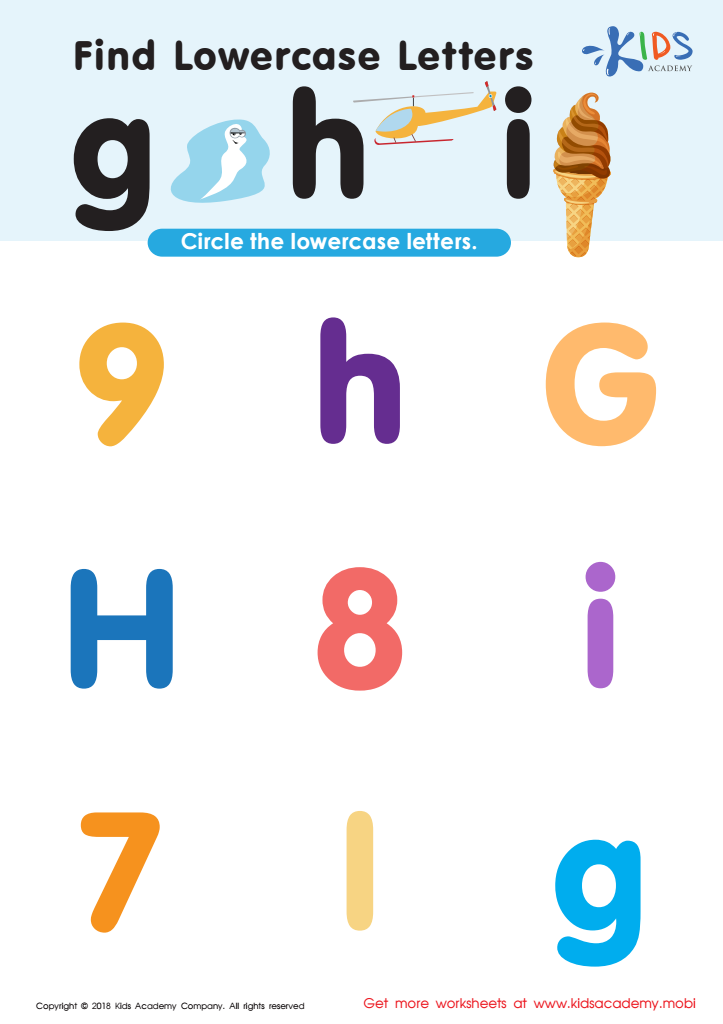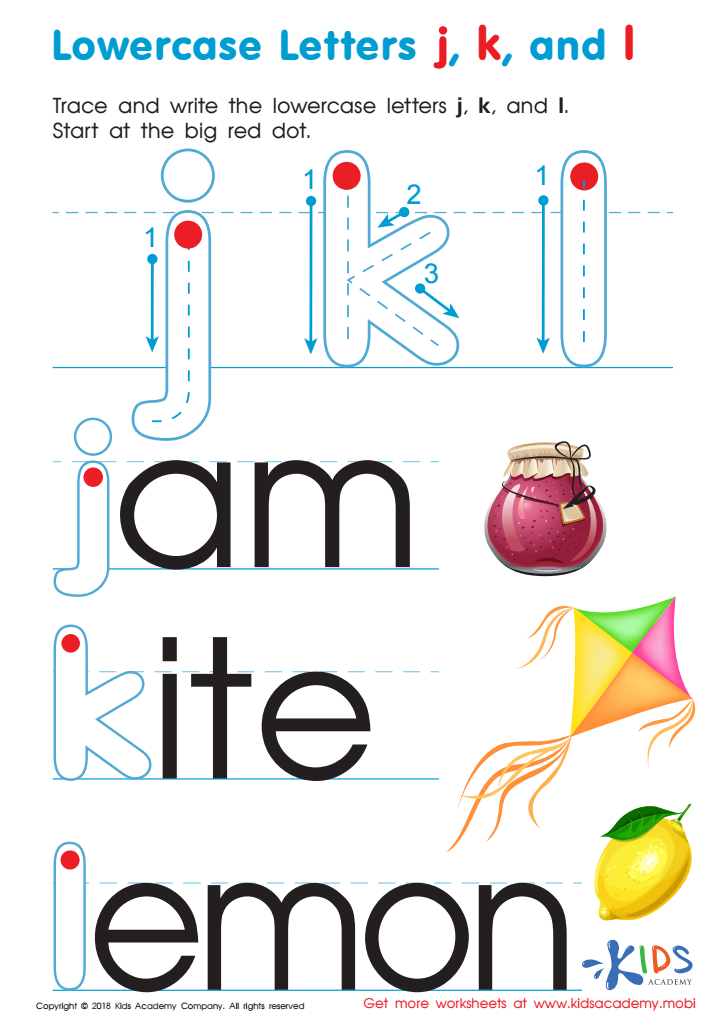Alphabet sequencing Lowercase/Small Letters Worksheets for Ages 5-7
3 filtered results
-
From - To
Discover fun and educational Alphabet Sequencing Lowercase/Small Letters Worksheets, ideal for children ages 5-7. Designed to enhance letter recognition and order skills, these worksheets guide kids through the alphabet, from 'a' to 'z.' Each engaging activity promotes early literacy, fine motor skills, and cognitive development. Perfect for classrooms or home practice, these resources help young learners master letter sequences while building confidence in their reading and writing abilities. Download today to boost your child's language skills in an entertaining and interactive way! Explore a variety of free, downloadable worksheets to support your child's learning journey.


Find Lowercase Letters g h i Worksheet


Lowercase Letters p q r Worksheet


Lowercase Letters j k l Worksheet
Alphabet sequencing for lowercase (small) letters in children aged 5-7 is crucial for several reasons, fundamentally shaping their literacy and writing development. At this formative stage, children transition from recognizing letters individually to understanding their sequential order, a skill foundational for effective reading and writing.
-
Reading Proficiency: Sequencing aids in phonemic awareness, enabling children to recognize letter patterns within words, thus enhancing their reading fluency and comprehension.
-
Writing Skills: Understanding letter order helps children form and spell words correctly. Mastering both uppercase and lowercase letters ensures they can read and write in varying contexts.
-
Cognitive Development: Alphabet sequencing tasks strengthen children's memory and attention to detail. These cognitive skills are transferable, aiding overall academic performance.
-
Foundation for Spelling: Sequential knowledge of alphabets lays a groundwork for spelling skills, critical in developing competent and confident readers and writers.
-
Engagement and Confidence: Successfully learning alphabet order fosters a sense of achievement and confidence, motivating children to advance in their literacy journey.
Investing time in teaching alphabet sequencing therefore supports a cascade of academic skills, nurturing well-rounded, literate young learners poised for future educational success.
 Assign to My Students
Assign to My Students










